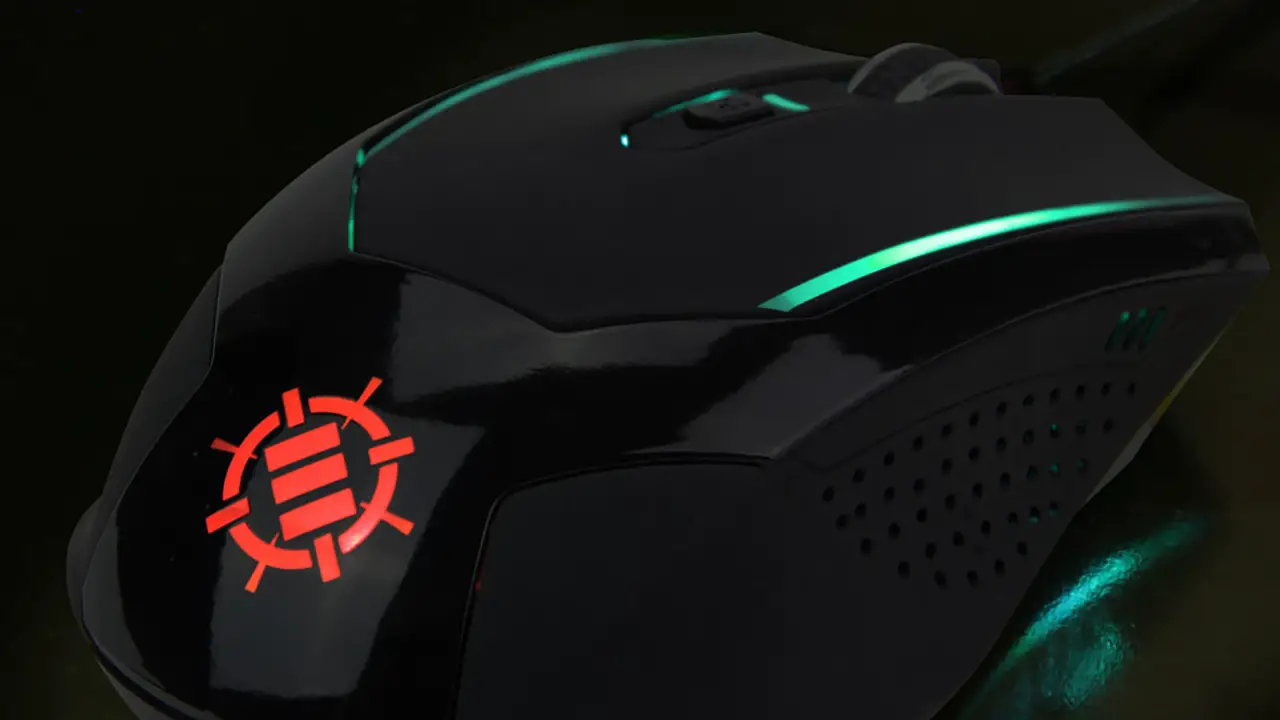
We review a lot of hardware around here, and oftentimes it tends to be the bleeding edge. That said, there are more than a few of you asking for something more value-priced or mid-range when it comes to peripherals. I’ve recently found myself in the market for a new mouse for daily use, and I stumbled onto one from Accessory Power called the ENHANCE Voltaic Blackout. While we squint at the capitalization and unravel the marketing-speak that is the name, it turns out that the Blackout (as I’ll refer to it from now on) is a pretty solid entry-level mouse. Recently I put it through its paces to see how it holds up against its contemporaries.
As soon as I removed the Blackout from its packaging, several features normally reserved for mice at significantly higher pricing brackets stuck out. Featuring a braided cable with a rubber grommet at the base to prevent damage at the pinch point, a rubberized click surface, and hardware-adjustable DPI, I was surprised to find that the MSRP is only $14.99.
The body of the Blackout is universal – it is neither left nor right handed, though the forward/back buttons on the left hand side might say otherwise. Comparing it to a variety of mice from value-priced to extremely expensive, the Blackout feels fairly comfortable, if a bit short. Mice like the HyperX Pulsefire or the Steelseries Sensei are taller, leaving less of the user’s palm against their mousing surface.
On the left side of the mouse, the forward/backward keys stick out a little further than I’d like. It’s entirely possible that this varies slightly between builds, but my Blackout’s side keys stick out a good millimeter or two from the body, making them easy to hit accidentally. If you have less meaty hands than I do, or if I’m right that there may be manufacturing variance, this may not be an issue for you. For me, it’s a minor inconvenience.
On the top of the mouse are a trio of fantastic features. The first is the rubberized mousing surface. From the top of the mouse down through both actuation arms for left or right click is a rubberized surface. My OriginPC Laptop is covered in this surface as well and, while it is a fingerprint magnet for any oils in your skin, there’s nothing better for ensuring you hit that mouse click every time. The fact that it runs all the way underneath the palm of my hand is a great bonus.
The second major feature topping the Blackout was one I’d overlooked while reviewing other mice. The scrollwheel free-hangs in the middle of the two mouse buttons instead of being completely enclosed (as you can see below), and it has a rubberized surface that runs around the center of the wheel. I recently used a mousewheel that was entirely rubber, but had no texture to it. After a few days of use, this inferior mouse was all but unusable. The Blackout’s rubberized surface has a ridged texture arranged in a grippy grid pattern that ensures when you roll the wheel it’ll do what it’s supposed to do.
The last feature on top is one that I didn’t expect to find in a mouse in the $15 range — a hardware DPI switch. Just below the mouse wheel is a small physical switch that will change the optical sensor from 1200 to 2400, and up to 3500 DPI. Higher DPI was useful for FPS gaming, while lower DPI was great for more precision building in Planet Coaster.
Customizing LEDs to match your keyboard or case is good fun. The Blackout (despite the name) features an LED that cycles through seven colors. As there is no software to install, however, there is no way to control them. The lights simply pulse through the color scheme over time. On the bottom of the mouse is a small button to turn the lights off, if that’s not your jam.
I mentioned there is no software to install just a moment ago, and that’s one of the Blackout’s best features. There is no cumbersome software to put on your PC, no updates to pop up and bother you, no tray icon demanding your attention, and nothing wasting your precious RAM while you are fragging your friends. The Blackout is completely plug-and-play, instantly recognized and ready to go from the moment you plug it in.
ENHANCE Voltaic Blackout mouse
Great
With features beyond its MSRP, the ENHANCE Voltaic Blackout is an excellent blend of value price and premium features. There are a few hiccups in design, but overall it’s a remarkably solid input device. Whether it be for daily use, or for everyday gaming, the Blackout is a solid mouse for the money.
Pros
- Fully plug-and-play
- Braided cable and pinch-point grommet
- Rubberized surface and textured wheel for grip
- Hardware switch up to 3500 DPI
- Excellent price at $14.99 MSRP
Cons
- A little shorter-height body than its contemporaries
- Forward/backward keys stick out bit too far



